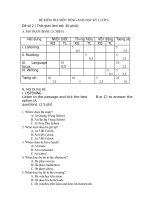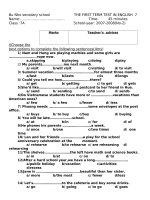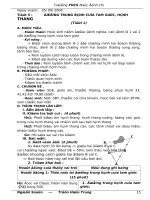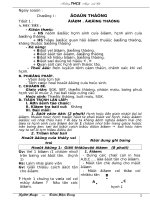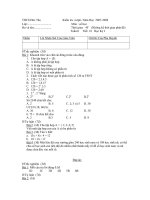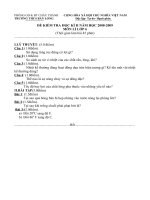- Trang chủ >>
- THPT Quốc Gia >>
- Hóa
California science vocabulary card(1 6) (2)
Bạn đang xem bản rút gọn của tài liệu. Xem và tải ngay bản đầy đủ của tài liệu tại đây (1.4 MB, 122 trang )
Grade 2
Amphibians are animals that
live on both land and water.
amphibians
© Macmillan/McGraw-Hill
Photograph by BRUCE COLEMAN INC./Alamy
California Science / 2
SC08_VocabularyCards.indd 2
SC08_VocabularyCards.indd 3
1/27/06 5:50:06 PM
1/27/06 5:50:08 PM
Published by Macmillan/McGraw-Hill, of McGraw-Hill Education, a division of The McGraw-Hill Companies, Inc.,
Two Penn Plaza, New York, New York 10121.
Copyright © by Macmillan/McGraw-Hill. All rights reserved. No part of this publication may be reproduced or distributed in
any form or by any means, or stored in a database or retrieval system, without the prior written consent of The McGraw-Hill
Companies, Inc., including, but not limited to, network storage or transmission, or broadcast for distance learning.
Printed in Mexico
1 2 3 4 5 6 7 8 9 078 09 08 07 06
ISBN 0-02-284472-4
amphibians
© Macmillan/McGraw-Hill
Photograph by BRUCE COLEMAN INC./Alamy
California Science / 2
Amphibians are animals that
live on both land and water.
attract
© Macmillan/McGraw-Hill
Photograph by Michael Scott for MMH
California Science / 2
When a magnet attracts a metal,
the magnet pulls the metal.
classify
© Macmillan/McGraw-Hill
Photograph by Michael Scott for MMH
California Science / 2
Classify means to group things
that are alike. This boy is
classifying rocks.
communicate
© Macmillan/McGraw-Hill
Photograph by Macmillan/McGraw-Hill
California Science / 2
Communicate means to write,
draw, or tell others your
ideas. You can use a chart to
communicate what you know.
compare
© Macmillan/McGraw-Hill
Photograph by Macmillan/McGraw-Hill
California Science / 2
Compare means you tell how
things are alike and different.
You can use a Venn diagram to
compare a cat to a dog.
0
0
100
200
miles
150
kilometers
Sacramento
Bishop
Los Angeles
distance
© Macmillan/McGraw-Hill
Photograph by Baily Lauerman for Macmillan/McGraw-Hill
California Science / 2
Distance is how far away one
thing is from another.
draw
conclusions
© Macmillan/McGraw-Hill
Photograph by Boris Karpinski/Alamy
California Science / 2
Draw conclusions means to use
what you observe to explain
what happens. You can draw
conclusions about what the tree
roots did to this rock.
extinct
© Macmillan/McGraw-Hill
Photograph by D. Schwimmer/Bruce Coleman
California Science / 2
When a living thing is extinct,
it has died out. None of its kind
lives on Earth. The Ankylosaur
is extinct.
flower
© Macmillan/McGraw-Hill
Photograph by Peter Anderson/Dorling Kindersley
California Science / 2
A flower is the part of
a plant that makes seeds.
force
© Macmillan/McGraw-Hill
Photograph by (girl) Rubberball/PictureQuest; (ball) Photodisc/Getty Images
California Science / 2
A force is a push or pull used to
put something in motion. This
girl is using force to move the
ball.
fossil
© Macmillan/McGraw-Hill
Photograph by Mark A. Schneider/Photo Researchers, Inc.
California Science / 2
A fossil is what is left of
a living thing from the past.
friction
© Macmillan/McGraw-Hill
Photograph by David Young-Wolff/Photo Edit
California Science / 2
Friction is a force that
slows down moving things.
